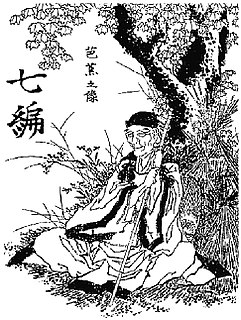 W
WHaiku is a type of short form poetry originally from Japan. Traditional Japanese haiku consist of three phrases that contain a kireji, or "cutting word", 17 on in a 5, 7, 5 pattern, and a kigo, or seasonal reference. Similar poems that do not adhere to these rules are generally classified as senryū.
 W
WBook of Haikus is a collection of haiku poetry by Jack Kerouac. It was first published in 2003 and edited by Regina Weinreich. It consists of some 500 poems selected from a corpus of nearly 1,000 haiku jotted down by Kerouac in small notebooks.
 W
WOku no Hosomichi, translated alternately as The Narrow Road to the Deep North and The Narrow Road to the Interior, is a major work of haibun by the Japanese poet Matsuo Bashō, considered one of the major texts of Japanese literature of the Edo period. The first edition was published posthumously in 1702.
 W
WPoint Omega is a short novel by the American author Don DeLillo that was published in hardcover by Scribner's on February 2, 2010. It is DeLillo's fifteenth novel published under his own name and his first published work of fiction since his 2007 novel Falling Man.
 W
WShigitatsu-an is a haikai dojo in Ōiso, Kanagawa, Japan, where people learn haiku poetry from the master there or from each other. It is one of the three important such dojo, the other two being Rakushi-sha in Sagano, Kyoto, and Mumei-an in Ōtsu, Shiga.
 W
WStrugnell's Haiku is a collection of three songs for voice and piano by the composer Colin Matthews, set to haiku poems by Jason Strugnell, an alter ego of the poet Wendy Cope.
 W
WThe Yamadera Basho Memorial Museum was established in 1989 as part of the cultural building boom in Yamagata celebrating the 100-year anniversary of the founding of the city. Located about 20 minutes by train from Yamagata Station, it sits on the south side of the steep river valley facing Yamadera to the north, the historic temple founded in 860 which is one of the area's most beloved sacred sites and top sightseeing destinations.